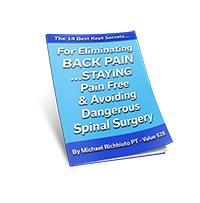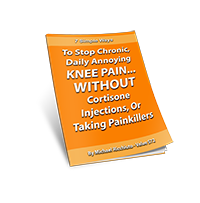So there are many sources of low back pain but one of the biggest problems with having low back pain is that people think the same solutions are for everyone even if someone is told that they need spinal surgery.

IF YOU ARE HAVING LOW BACK PAIN THEN YOU MUST KNOW THESE 5 THINGS ABOUT SPINAL SURGERY!
1.) Spinal surgery should be considered a “last resort” to ending low back pain. If you have not tried conservative treatment like physical therapy then this must be done first.
In fact, many insurances insist that up to 6 months of physical therapy be performed before spinal surgery is considered.
2.) Spinal surgery is not a long term cure for spinal pain. Many individuals believe that having spinal surgery will eliminate their pain and this is not the case.
Low back pain can return and in many cases gets worse after surgery. A combination of physical therapy, lifestyle changes, exercise, and nutritional changes, must occur to assist in a successful outcome.
3.) When you have spinal surgery your body has been modified from the body that you were born with. What this means is that if there are parts of the spine that were meant to move and now have been forced to be stationary during surgery then the body will find ways to achieve the lost motion at other joints.
In the long run the new biomechanics will then can degenerate other joints of the body prematurely like the hips, knees, other parts of the spine and shoulders.
4.) If you are rushing to spinal surgery because this has been the only option provided to you by your healthcare provider then let’s discuss your problem and find an appropriate conservative solution first.
Click here for a FREE 15 minute phone discussion of your problem.
5.) You have to work very hard physically after spinal surgery to become pain-free and many times being “pain-free” is never achieved.
There are also complications of surgery that must be considered for every individual. A comprehensive long term plan for your spine must be developed.
Having a healthcare practitioner simply tell you that you need spinal surgery is not an acceptable long term plan.
*Can you imagine if you took your car into the mechanic and he said that you needed a muffler on your car and then he told every single person with every make and model of every car that they need a muffler to fix their car. That of course would be crazy but this happens when you rush into surgery. Please consider all options and receive multiple points-of-view before you make this important decision.*
The problem is that the spine is complex and there are many causes of spinal pain. Here are some of the causes of lumbar spine pain:
1) Lumbar disk tear- The spine is comprised of bony segments called vertebrae, a disk that is like a gel filled cushion, ligaments and muscles.
When the outer fibers of the “annulus” of the disk are torn that occur through quick unexpected movements of the spine, pain can occur.
This pain is often felt as “sharp” and immobility of the body soon follows. Some people have this feeling and report that they have “slipped a disk” but often this is not the case.
2) Lumbar disk bulge- When there is disruption to the internal compartments of the disk, a disk may protrude and lay on a nerve that is close to the spine.
Often people have the feeling of “pins and needles” or “numbness” in their lower extremities. This can be inconsistent or consistent in nature.
3) Muscle strain- There’re hundreds of muscles that attach to the spine and injury to these muscles can cause a “tightening” of the spine. Many of these muscles cannot be felt and lie deep to the surface.
4) Lumbar degenerative disorders- Sometimes the bones of the spine become worn and the surfaces of the cartilage that protects the bony ends from rubbing on one another becomes degraded.
When the bony ends press on one another they create inflammation, pain and more degradation.
5) Ligamentous tear- Ligaments are connective tissue that attach bone to bone.
Sometimes ligaments will become torn through trauma and/or degeneration and will create pain in the spine.
The good news is that most conditions of the spine can be treated without the need for medication and surgery especially at the first hint of pain that is experienced by an individual.
Lumbar spine pain often resolves without the need for intervention only to return a short time later if the cause is not addressed appropriately.



